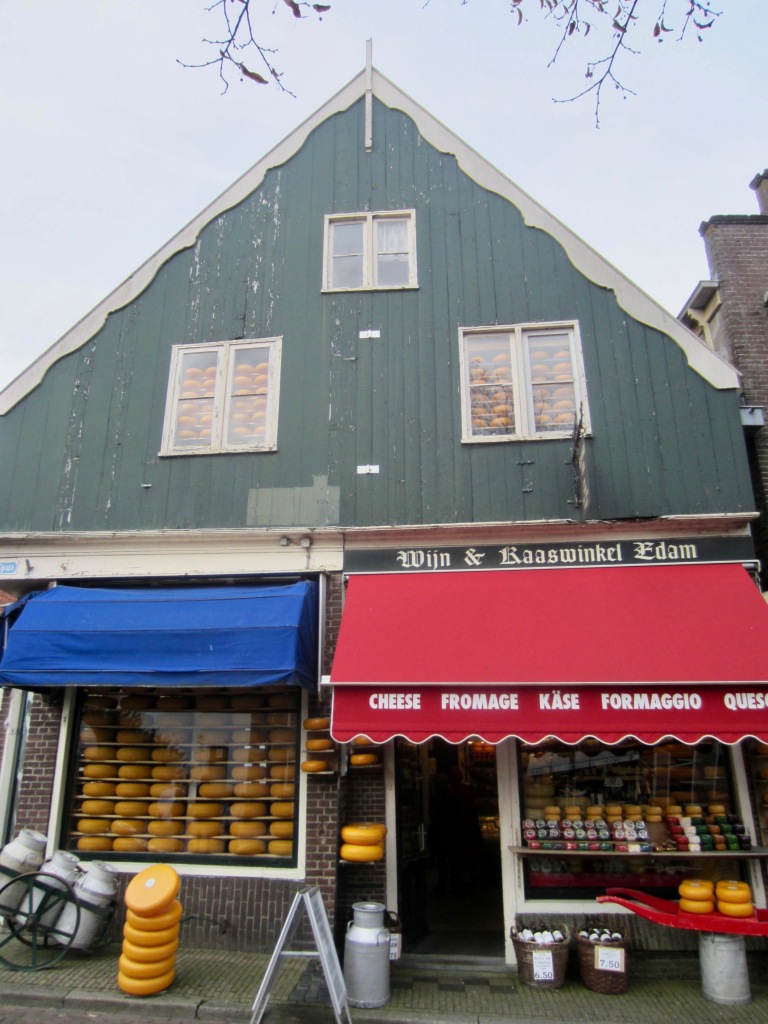I suppose the easiest way to travel right now is through memory. As I do more cycling around my neighbourhood these summer days, I’ve been thinking of the cycling day trip my husband and I took in fall 2017. We took a ferry from downtown Amsterdam to Amsterdam-Noord where we rented bikes and explored the Waterland, the picturesque countryside east of the city that boasts traditional Dutch farms, separated bike paths built on dikes, and charming seaside towns.
Notice how flat it is to bike here—such a nice change from Vancouver! This excursion was an excellent and easy break from urban sightseeing.


In typical fashion, I try to pack too much into a day though (as my husband would readily attest to). Cycling from Amsterdam to Marken to have lunch, and then hopping on a ferry to Volendam, heading north to Edam and coming back through Broek in Waterland to have a bite to eat and being back at the bike shop by 6pm (and getting a bit lost on the way home too)? Yeah, we count our lucky stars we made it just before the owner was locking up. My legs were spinning like the windmills we passed.

Well, not this one. This one wasn’t spinning at all.
We saw a lot more of these modern ones, though the romantic in me was wondering where all the traditional windmills are? Are they a thing of the past?

The village in the photo above is Durgerdam, a town of about 430 inhabitants that we quickly passed through. Check out the cobblestone street (not the most bike friendly, but it certainly gives it character!)

Marken was our first stop. This small fishing village was originally an island until engineers connected it via a causeway in 1957.

The rows of green houses with triangular roofs were particularly striking.

There’s something oddly satisfying about seeing other peoples’ quotidian routines when you are far from yours. If there is an art to laundry hanging, I think this person’s got it down.

I tried some tasty kibbeling for lunch (the Dutch version of fish and chips). Marken used to be a fishing hamlet in danger of being abandoned but it’s been able to survive as a tourist destination.

The main reason we bit off more than we could chew regarding our ambitious cycling day was because we met some fellow tourists who told us you could take a ferry from Marken to Volendam. It would be quicker than backtracking to get up to Edam, and why not enjoy a ferry ride with new scenery? For those who know me well, spontaneity is not my strong suit (a friend joked with me many years ago that I had to “plan my spontaneity”). I laugh but it’s kind of true. Not so on this day!

The bikes were stored on the lower deck where there was also covered seating. I didn’t last long up here—the winds were something else! We said goodbye to Marken . . .

. . . and about 30 minutes later said hello to Volendam, of which I hardly have any pictures because we couldn’t linger long in order to reach Edam and all the way back to Amsterdam on time. And besides, Rick Steves called it “grotesquely touristy” and we believe everything he says, so that settled it.

Who am I kidding? Of course I took another photo, and I’m not sure Rick, this residential street looks rather lovely . . . maybe I’m just a sucker for canals, which reminds me, I have yet to post about Venice. Next post maybe.

Speaking of canals, Edam‘s were picture perfect. Here are our colourful bikes in the centre of town.

We took a peek into this cheese shop below—why we didn’t buy any, I don’t remember. I wished we had more time to explore this quaint town. Edam is famous for its cheese of the same name covered in yellow or red wax. Too bad we weren’t there in the summer on market day where local farmers bring their cheese into town by boat to get it weighed and measured.

Just your regular fowl hanging out by the side of the road:

Instead of hugging the water, we took a faster inland route back to Amsterdam that led us through the beautiful town of Broek in Waterland as the sun was setting. This is the town’s lake that, in the winter, becomes an ice rink.


The town is known for its extreme cleanliness. Not much was open by the time we got there but thankfully this restaurant was so we could have some sustenance for the last leg of our journey.

And then we were back in the big city to witness night cast its spell.

What places have you been revisiting in photos, dreams, memories?































